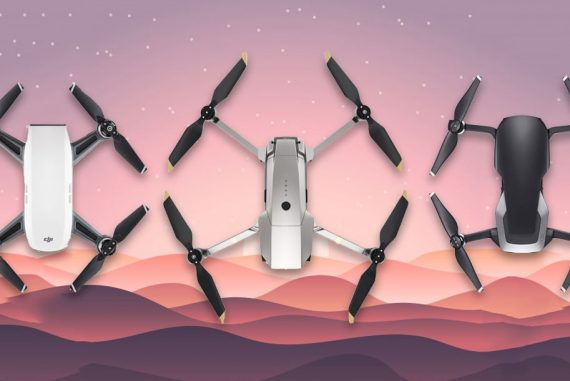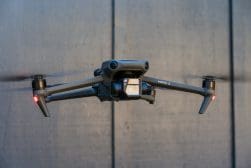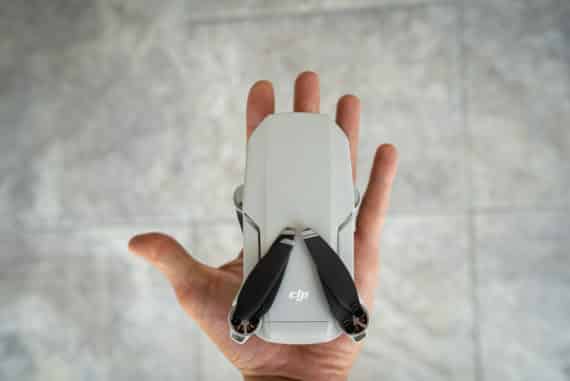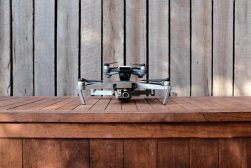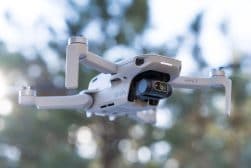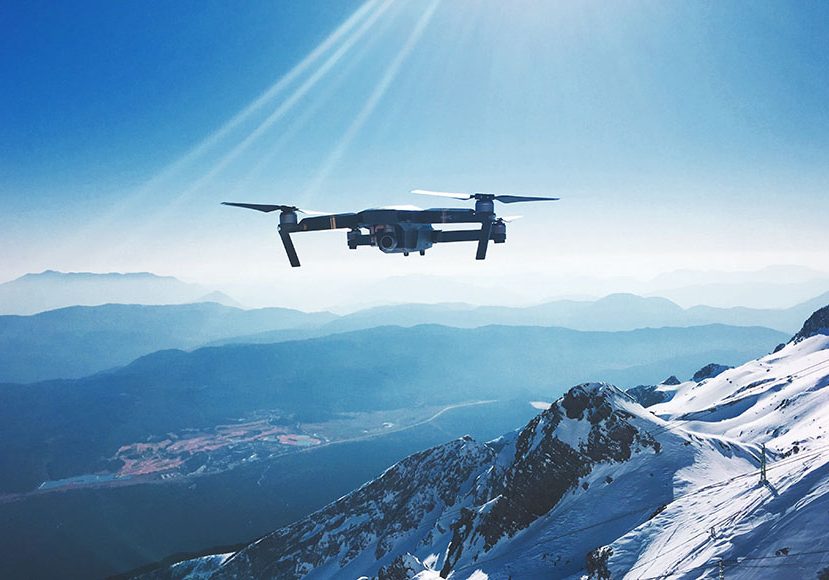
Best Long Range Drones in 2024: Fly Further for Longer
Dive into the top long-range drones of the year, designed to enhance your aerial adventures with extended flight distances and durations.
This guide will walk you through the best long-range drones on the market today.
Some of the best uses for drones involve flying them for long distances and out of sight.
Coastline mapping, landscape travel footage, photogrammetry, to name a few.
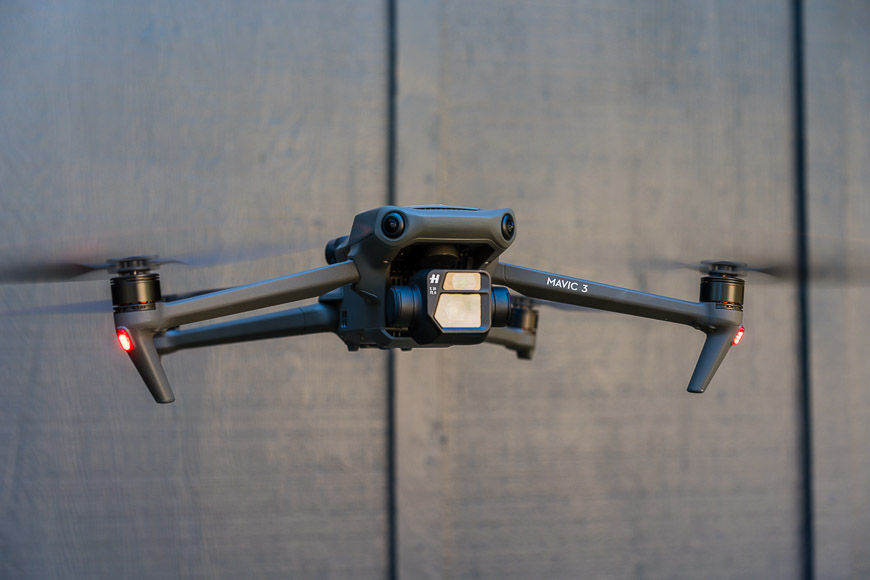
Advanced flight capabilities, exceptional camera quality, and extended battery life: a standout choice for long range aerial photography and videography.
Thankfully, modern long-range drones have that covered.
As well as improved battery life that can have drones in the air for longer, improved signal strength and transmission capabilities can have them flying further away.
So let’s have a look now at which drones are best for long-range flights.
What is the Best Long Range Drone in 2024?
DJI Mavic 3 Pro | Best All-Round Long Range Drone

Marc Bergreen
- Long range
- Hasselblad sensor on the main camera
- Shoots up to 5K video
- Three lenses, three focal lengths
- Great RAW image files
- Great max flight time
- Great maximum range
- Gimbal cover is a little irritating
- Very expensive
The DJI Mavic 3 Pro is a pretty expensive long-range drone that’s generally the exclusive domain of professionals and rich hobbyists.
However, it’s top of the list because it has the longest range of any drone in this list, with a maximum range of 28 km or 17.3 miles.
Check out the video below where the YouTuber Libya tests the 3 Pro’s max flight time and range:
Unlike most long-range drones, which have one or, at the most, two lenses, the Mavic 3 Pro has three different focal lengths.
The main camera is 24mm with an adjustable aperture of f/2.8 to f/11.
The lens’ sensor is a Hasselblad, of legendary Hasselblad quality, and shoots a maximum of 5K resolution footage at 50fps in 10-bit colour, plus 4K slow motion at 120 fps and 20-megapixel RAW stills.
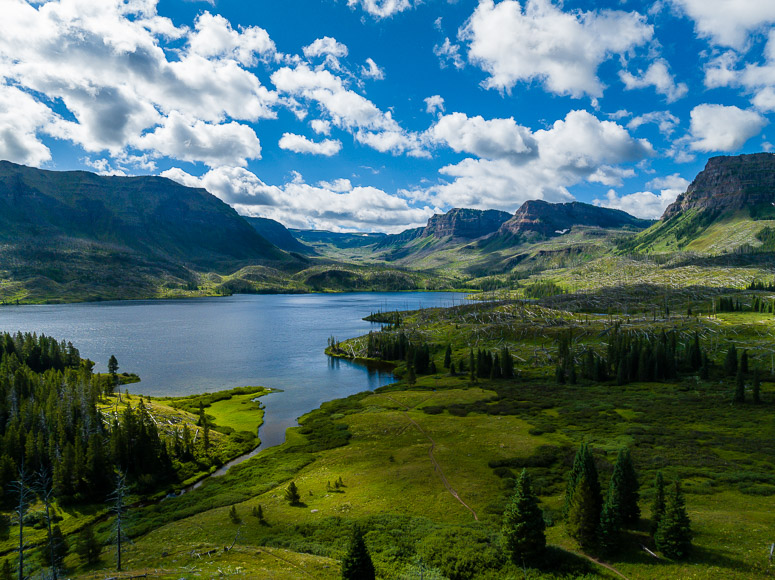
Mavic 3 Pro sample image | Marc Bergreen
The two other camera lenses are a 70mm medium telephoto and a full telephoto of the equivalent of 166mm.
Neither of these lenses offers 5K resolution, but they can still shoot RAW files and 4K video at up to 60 fps – the camera quality alone is enough to warrant someone buying the 3 Pro.
Not only can these long-range drones be flown at great distances, but they can also stay in the air for a long time. The DJI Mavic 3 Pro’s flight time is around 43 minutes on a full charge.
DJI Mavic 3 Classic
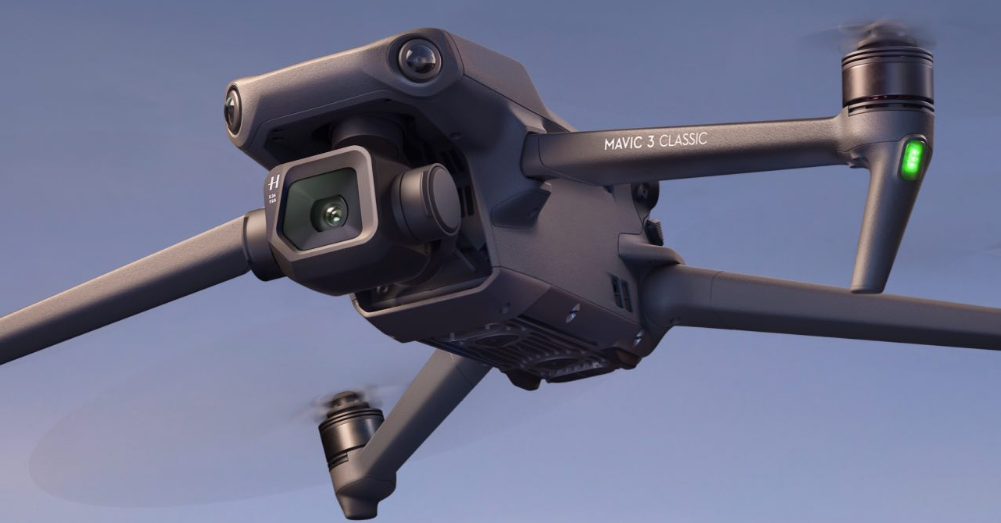
- Good price
- Adjustable flight speed
- Long range
- Hasselblad sensor
- AI-assisted night filming
- Great max flight time
- No zoom camera
With a flight range of 15km or 9.3 miles, the DJI Mavic 3 Classic can’t fly as far as the Mavic 3 Pro, but it’s one of the best long-range drones as it comes at a more affordable price point.
Despite this lower price, it still comes with a suite of professional features.
Like its more expensive brother, it has that 5.1K Hasselblad sensor which produces incredible colour, detail, and overall optical quality.
It doesn’t have three lenses, just one, so no zoom lens, but thanks to its high-resolution sensor, you can crop your footage and still have high-resolution results – the camera quality really is excellent.
Film output can be in either D-LOG -which is an excellent, flat colour profile that’s a perfect blank slate for editing – or HLG, which gives you higher definition and contrast footage. Either of those can be shot at up to 50fps.
Watch the video below to see YouTuber FlyWithMike testing the max flight and range of the Classic 3:
The long-range drone also features cruise control, waypoints, and speed control, so you can manually adjust your flying speed and fly as slowly as 1 metre per second.
With its variable aperture lens of f/2.8 to f/11, it has good low-light performance. It enhances this with AI-assisted automatic noise reduction, so night footage is usable right out of the camera, with no need to clean it up in editing software.
You also get 360-degree tracking. The Mavic 3 Classic can track a subject from any point of the clock face.
It’s also strong and stable even in high winds, which is reassuring for long flights, especially when the drone itself might be out of your sightline, and its body is covered in omnidirectional sensors to help avoid in-flight obstacles.
Autel Evo 2 Pro drone (6K Rugged Bundle V3)

- 6K video
- Variable aperture lens
- Good flight range
- Excellent flight time
- Waypoints
- Smaller sensor than some competitors
Although the Autel Evo 2 Pro is quite pricey, it’s one of the best long-range drones as it’s high quality and has one of the longest ranges in this guide, tied with the DJI Air 3 and Mavic 3 classic at 15 kilometres, or 9.3 miles.
Despite it only having a smaller 20-megapixel sensor than many of its competitors, it still delivers.
You can shoot 6K video at up to 30fps, plus 12-bit RAW stills. And you also get a range of shooting modes built-in, for example, time-lapse, burst, and HDR.
It has great low-light performance thanks to its maximum ISO of 44,000 and the lens’ variable aperture of f/2.8 to f/11, with great camera quality to boot.
Its flight time is excellent, with up to 40 minutes possible on a single charge, and the drone is sturdy and well-able to fly in high winds
Added to that, with its noise suppression capabilities, it’s one of the quietest long-range drones on the market, so it’s good for flying discreetly as well as long-range.
This bundle gives you spare batteries and propellers, too.
DJI Air 3
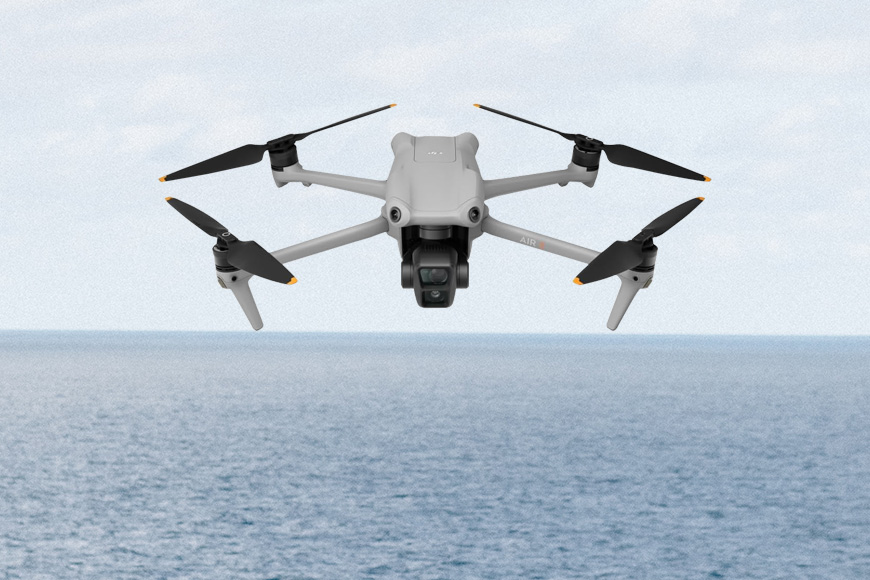
- Great battery life
- High-resolution video and photos
- Good flight range
- Good low-light performance
- Waypoints
- Great max flight time
- Need ND filters for day shoots
The DJI Air 3 is a solid drone overall, with a good 15-kilometre (9.3-mile) range.
It has two cameras – which both use the same 48-megapixel sensor – a 24mm f/1.7 and a 70mm f/2.8 lens.
Having such wide apertures is great for shooting in low light, but for long-range flights in bright conditions, you’ll need ND filters.
It has the capability to shoot 4K video with 10-bit, cinematic quality, HLG/D-LOG M colour profiles, and 48-megapixel RAW photos.
Watch the video by Dustin Dunnill below who tests the max flight time, range and flight performance with some stunning aerial photography and video.
Unlike most long-range drones, where vertical footage can only be created by cropping in and losing resolution, the DJI Air 3 can tilt its lens and shoot vertically at full resolution.
It has waypoints. So, you can pre-program every element of a flight – the gimbal tilts, filming heights, the route itself – and then the drone will take care of it.
There’s also active tracking – which works through a full 360 degrees – plus cruise control for buttery-smooth, consistent flying and filming.
It has an excellent maximum flight time of 46 minutes, and, as the body is well-covered with omnidirectional sensors, there’s no worry that your drone might fly into any obstacles while it’s out of sight.
Autel Robotics EVO Lite+ Drone

- Great flight time
- 6K video
- Good flight range
- Easy to use
- Manual control over images
- Good max flight time
- No LOG profile
- Legs stick out when folded
This is a good all-round drone, which isn’t insanely expensive for its specs. It also has a decent range of 11.9km, or 7.4 miles, with a strong signal between the drone and the controller.
Its flight time is good, too, quite a bit longer than many other drones, allowing roughly 40 minutes of flight time on a single charge.
It has a high-quality 6K video camera, which allows you to film at 30 fps and at a resolution that gives you plenty of options to crop in, either for the purposes of capturing details or for stabilisation.
The lens has a variable aperture of f/2.8 to f/11, so it’s excellent for all-around use in all lighting conditions, and there’s a 3X lossless zoom too.
The 1-inch 20-megapixel sensor gives you good low-light capabilities, and the drone’s Night Mode is AI-assisted and automatically denoises and smooths footage.
As well as having pro features, it’s also a decent drone for beginners, both because it’s easy to use and because the images it creates with the automatic settings in Standard Video Mode are good enough to use without heavy editing.
The drone figures out exposure well and produces footage and stills with consistent lighting and good colours.
There’s also a Pro Mode, which offers shutter and aperture priority settings, plus a full manual mode for anyone who wants to have complete control over their output.
DJI Mini 3 Pro Drone
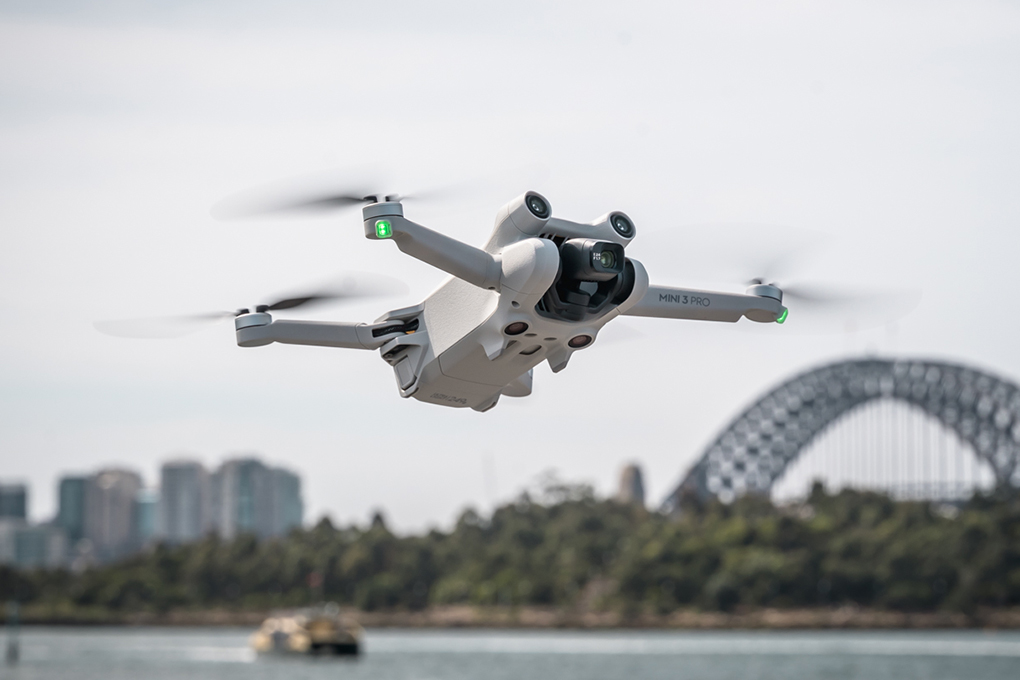
Tommy Williams
- Shoots 4K
- Compact and durable
- Good flight range
- Affordable
- Vertical shooting option
- Good max flight time
- Can be a little unstable in the wind
- Fixed aperture means you need ND filters for day shoots
The DJI Mini 3 Pro is one of the cheaper drones in this guide and retails at a price of $800.
Considering this price, its good specs, and its good flight range of 12km (7.5 miles), it’s probably the best long-range drone for those on a budget.
It shoots 4K at 30fps, 2.7K at 60fps, and 1080p 120fps, and it can also do all these things when shooting vertically.
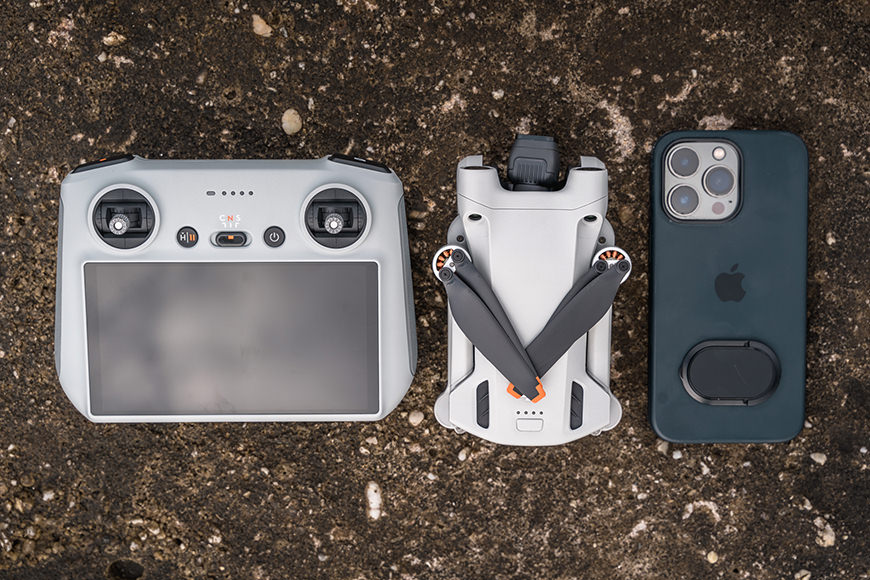
The best long-range drone needn’t be big | Tommy Williams
Unlike other mini drones, it does this by tilting the camera and filming at full resolution. There is no need for the cropping that leads to lower-resolution footage.
It’s compact, foldable, and light. And, at just under 250 grams, it is possible to legally fly the DJI Mini 3 Pro in most locations, as you don’t need to be certified or get special authorisation to do so.
Another feature that makes this drone even more portable is that the battery case is also a charger, which is great for long-range shoots when you’re on the go.
Its low weight means that it can be a little unstable in high winds. However, the flip side of this is that it’s very durable and can survive crashes that would damage heavier drones.
DJI Mini 2 SE drone
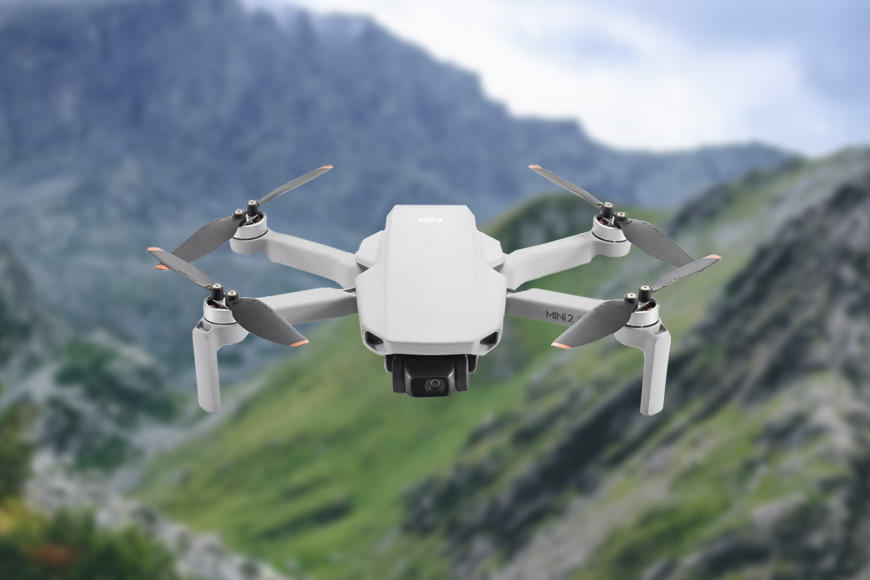
- Good flight range
- Affordable
- User-friendly intelligent flight modes
- Great for beginners
- Compact
- Good max flight time
- Lower resolution footage
In terms of value, The DJI Mini 2 SE is the best long-range drone in this guide.
Despite its $400 price tag, it has great specs and a very decent flight range of 10 kilometres.
With it, you can capture 2.7K video at 30fps and 1080p at 60fps.
It has a range of intelligent flight modes, plus, if the controller dies or the drone’s battery starts to run low, it will automatically fly back to where the controller’s last signal came from.
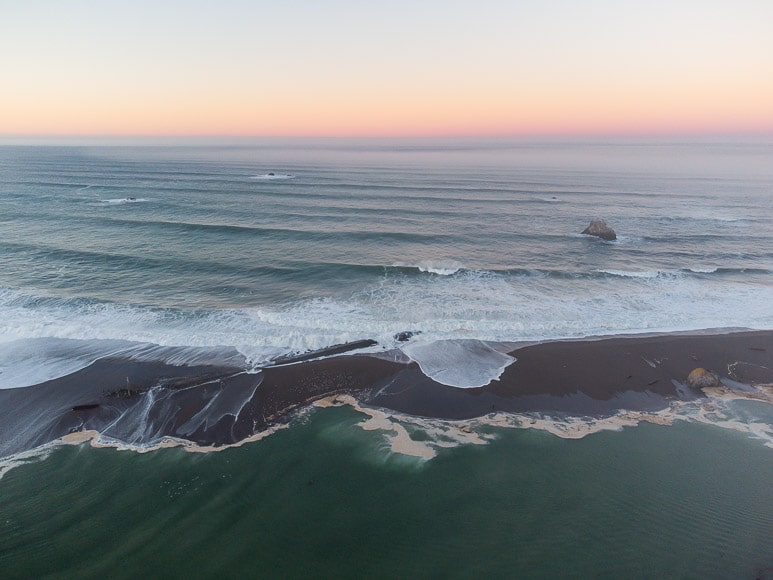
Having a long-range drone allows you to take it out beyond the shores | DJI Mini 2 | 1/50 f/2.8 ISO 400 | Marc Bergreen
A comforting thought for long-range drone use, especially when the drone itself is no longer visible.
Flight time is decent, especially for a drone of this price, and a full charge will get you 31 minutes in the air – you can read more details about its max flight times in our full guide to the DJI Mini 2 range.
It’s compact, easy to pack away, and weighs less than 250 grams. That means fewer restrictions on where you can use it and no need to register it with any flight authority.
Despite its low weight, it doesn’t have too many issues flying in high winds, staying pretty stable whether flying or hovering.
Fimi X8SE Drone

- Waypoints
- Good price
- Great low-light capabilities
- Weather-resistant
- Good max flight time
- No obstacle avoidance sensors
- The gimbal is not the best quality
- Lower resolution footage
The Fimi X8SE is an affordable long-range drone that gives users a decent 10-kilometre (6.2 mile) range.
It has a half-inch 48-megapixel sensor and can shoot RAW photographs and mp4 video footage at up to 30 fps.
Its lens has an aperture of f/1.6, and it has an ISO range from 100 to 6400, so low light performance is one of its strong points.
You can fly it for up to 35 minutes on a single charge, and it’s not a weedy machine by any means.
It has level 8 wind resistance, can be flown in moderate rain or snow, and up to a height of 800 metres.
It also has several active tracking modes and one of the most important features for anyone wanting to fly drones long distance: waypoints.
You can set the flight path, tell the drone what to do when it gets to different points (in terms of height and camera actions), and send it on its way.
How Can You Extend the Range of a Drone?
Extending the range of a drone involves a combination of hardware modifications, software tweaks, and best-practice flying techniques.
Here are some methods to consider, depending on the model of your drone.
- Antenna Upgrades:
- Replace the stock antenna on your drone’s remote controller with a higher gain antenna.
- Consider using directional antennas like patch or helical antennas, which focus the signal in a specific direction, offering a longer range.
- Signal Boosters/Amplifiers:
- Devices like range extenders can amplify the signal between the drone and the controller, allowing for greater distances.
- Optimal Flight Altitude:
- Flying at a higher altitude can reduce interference from obstacles on the ground.
- Reduce Interference:
- Fly in areas with minimal electromagnetic interference. Avoid areas with many Wi-Fi networks, power lines, or other electronic devices.
- Choose a frequency with less interference. Some drones allow switching between 2.4 GHz and 5.8 GHz.
- Battery Upgrades:
- While this won’t increase signal range, a longer-lasting battery can allow your drone to fly further distances without needing to return quickly.
- Software Modifications:
- Some drones have built-in software limits to their range for safety or regulatory reasons. While it’s possible to modify or bypass these limits, doing so can be illegal in many jurisdictions and can increase the risk of losing your drone.
- Use a Drone with a “Return to Home” Feature:
- This feature automatically brings the drone back to its takeoff point if it loses signal. While it doesn’t extend the range, it adds a safety net for longer flights.
- Stay in Line of Sight:
- Always keep the drone within your line of sight. Not only is this a legal requirement in many places, but it also ensures a stronger signal connection.
- Regular Maintenance:
- Ensure that the drone’s firmware is updated, and regularly check the hardware, especially antennas, for any damage.
- Consider Using a Relay or a Repeater:
- These devices can be placed at a midpoint between the controller and the drone to extend the signal range.
What is the Legal Limit for Flying Long Range Drones?

Depending on the country, the laws concerning how far away you can fly your drone are different:
Long Range Drone Flying in Australia:
- Drones must always be flown in visual line-of-sight, meaning you can always see your drone with your own eyes without the aid of devices like goggles or binoculars.
- Drones must not fly higher than 120 m (400 ft) above ground level.
- They must not fly closer than 30 m to people, other than those helping to control or navigate the drone.
- Drones should not be flown over or above people at any time or height.
- They must not fly closer than 5.5 km to a controlled airport if the drone weighs more than 250 g.
- Drones can operate within 5.5 km of a non-controlled airport or helicopter landing site if there are no crewed aircraft flying in the area.
- Different states may also have additional rules about drone use.
Long Range Drone Flying in the USA:
- Drones under 55 pounds are regulated by 14 CFR Part 107, known as the Small UAS Rule.
- For recreational flights, drones must be flown only for personal enjoyment.
- They should be kept within the visual line of sight or use a visual observer who is co-located with the pilot and in direct communication.
- Drones must give way to and not interfere with other aircraft.
- In controlled airspace (Class B, C, D, and surface Class E designated for an airport), drones must fly at or below FAA-authorized altitudes only with prior FAA authorization.
- In Class G (uncontrolled) airspace, drones must fly at or below 400 feet.
- Recreational flyers must take The Recreational UAS Safety Test (TRUST) and carry proof of test passage when flying.
- Drones must have a current FAA registration, be marked on the outside with the registration number, and the pilot must carry proof of registration when flying.
Long Range Drone Flying in Canada:
- Drones must be flown within the pilot’s visual line of sight.
- They should not fly higher than 122 meters (400 feet) above ground level.
- Drones should not fly closer than 30 meters horizontally from bystanders.
- They must not fly over bystanders or over public events.
- Drones should stay away from other aircraft and avoid flying near airports and heliports.
For other countries, regulations can vary widely, and it’s essential to consult the local aviation authority or their official websites for accurate and up-to-date information.
You should also read our guide on the legalities of flying drones over private property.

Advanced flight capabilities, exceptional camera quality, and extended battery life: a standout choice for long range aerial photography and videography.





